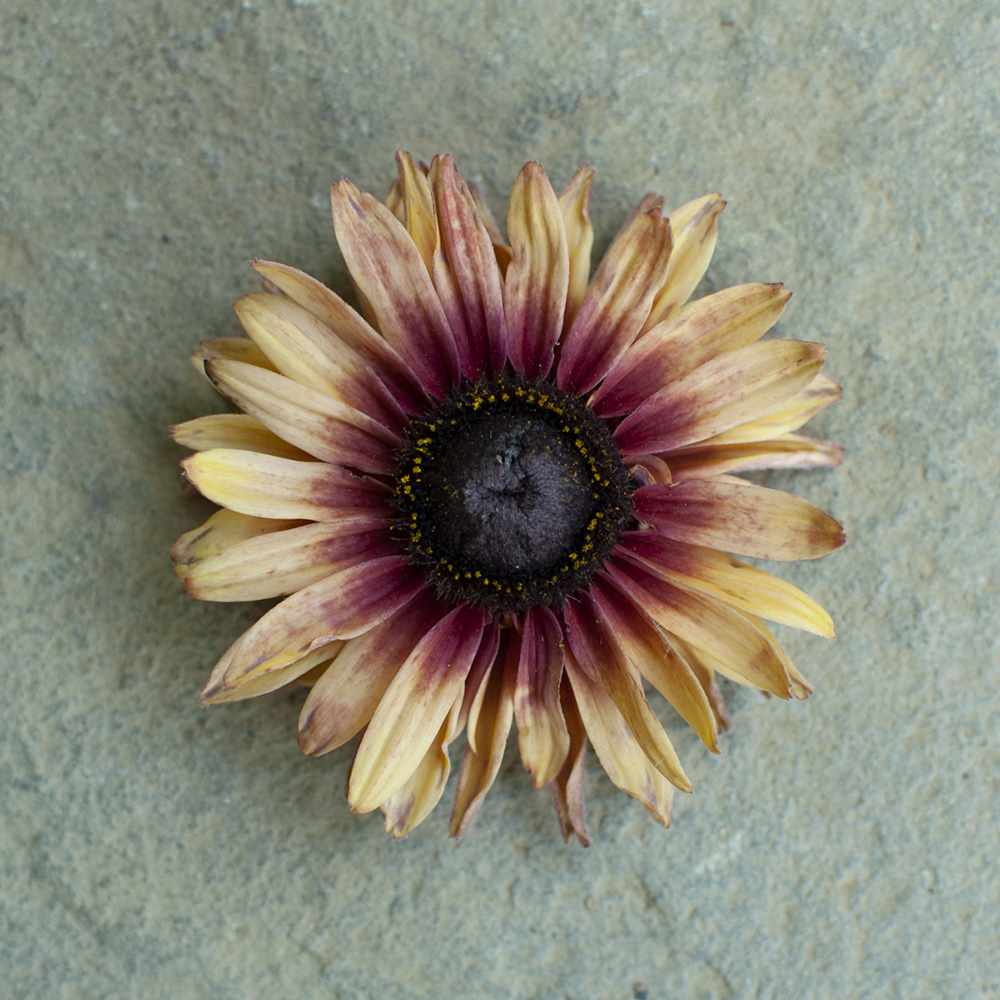It’s HOT out there! Like a volcano. Like the surface of the sun.
I’m a little bit more of a goofball than usual today–blame it on the doxycycline! Alas, Lyme disease is one of the occupational hazards of being a flower farmer.
BUT! One thing that has me out of my Lyme stupor and very pumped right now, besides the drugs, is the rudbeckia that are coming out of our fields.


Our crop of rudbeckia has been oh so wonderful this year. If I do say so myself! I do, and it’s mostly out of sheer amazement and only a little hubris.
You see, I don’t have the best track record with rudbeckia.
Last year, we tried to overwinter rudbeckia, and we didn’t have many survivors. The year before, it mostly got eaten by a woodchuck. But this year, oh, this year, lady Rudbeckia is in. the. house.

You may know rudbeckia as the native Black-Eyed Susans that grow wild in our area. Also called yellow coneflower, rudbeckia are in the same family as echinacea (pink coneflower).
The native Black-Eyed Susan is a very charming and lovely flower! But the rudbeckia we’re growing this year, dare I say, is like her more sophisticated, graceful, and slightly angsty older teen sister. The kind who goes out on weeknights and wears combat boots.
The color mix we’re growing is called, fittingly for this weather, “Sahara”–and daayummn she brings the heat!


Rudbeckia “Sahara” sports mostly semi-double and fully-double flowers, meaning they’ve got multiple layers of petals. This gives them a fuller appearance and a sturdiness in the vase that the native lacks.
Rudbeckia “Sahara” also blooms in a swoon-worthy range of peachy-pink-gold-rust-scarlet colors. You might associate these colors more with fall, but to me they are also the color of a summer harvest! Peaches, plums, apricots, tomatoes, cherries.
A lot of breeding work has been done to encourage both darker and softer petal colors in “Sahara” over the native yellow. I am personally fascinated by this breeding work, a lot of which involves hand cross-pollination of desirable blooms.




Now.
This fabulous flower sometimes gets a bad rap for looking a little brown.
But I promise you, it’s all part of her charm, and is not the sign of a dead flower!
The illusion of “brown” on her petals is actually very cool: it’s due to very subtle pink and purple streaking on the petals, like somebody took a tiny watercolor brush and got to work. How amazing is this coloration??



Rudbeckia will give you about a week of vase life–but she does like to have her water changed frequently! Daily is best.
You’ll notice rudbeckia’s water getting dirtier more quickly than with other flowers. If you like, you can add a few drops of white vinegar or bleach to the vase water to help with this.
We’re in love with rudbeckia! How about you?

Samantha is the owner of Sea Change Farm & Flower.
Connect with me!
Sign up for our newsletter here.



Oh, WOW, those are amazing! I also grow ‘Sahara’, ‘Caramel’, ‘Cherokee Sunset’ and ‘Chim Chiminee’ has wonderful crazy narrow long petals! I have a large area of garden I allow them to self seed with the stunning result of mass color! With adequate snow cover, these are hardy to zone 3 and do best in well drained soil of average fertility and resenting wet ground and winter wet that some climates experience. First year flowering with second year plants become just loaded in bloom, then the plants perish to make way for new seedlings to take their place, they really are the perfect biannual!!
Your rudbeckia patch sounds so beautiful! Thank you for sharing 🙂